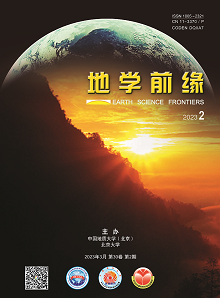The Late-Triassic middle-low metamorphosed rock assemblage exposed in the Gyaca area of the northeastern Tethyan Himalaya, southern Tibet, including the Langjexue Group, had been regarded as a set of abyssal-bathyal flysch strata. This study reveals the Upper-Triassic strata are bounded by a steep shear zone (SSB) where obvious differences in composition, structural deformation and metamorphism between north and south are observed. The northern SSB is characterized by accretionary complex with a “matrix + blocks” structure, with little fossil preserved to reveal its primary sedimentary structure. The “blocks” are mainly composed of meta-sandstone, limestone, marble, green-schist, basaltic schist, metasdiabase, actinolite schist and garnet mica schist, while the “matrix” consists of sandy slate and sericite quartz phyllite (or phyllonite). Strata of the southern SSB chiefly consists of medium-fine grained felsic sandstones, mudstone and epimetamorphic slate. Sandstone layers display flute and groove casts, load casts, parallel lamination and graded bedding, while siltstone or mudstone beds preserve plant stem fossils and fodichnia. Structural analysis shows the Gyaca accretionary complex undergoes two stages of deformation (D1 and D2). D1 is caused by bedding shearing in the top-to-south direction, which results in intensive penetrative foliation (S1) and new-born felsic quartzose veins; and D2 is characterized by middle-high dip angle with southward inclination-replaced foliation (S2), consistent with north-south contraction deformation with top-to-south movement accompanied by syntectonic intermediate-basic veins. Meanwhile, under north-south compression stress, strata on the south side of SSB develop imbricated fold-thrust structure. Zircon U-Pb isotopic chronology reveals the “matrix” of the Gyaca accretionary complex and the southern Langjiexue strata are Latin to Norian (242-220 Ma), while the “blocks” include Late Triassic, Late Jurassic (146 Ma) and Early Cretaceous (144 Ma), showing multi-age characteristics. Besides, the timing of D2 is constrained to be 56 Ma by ages of syntectonic dikes, representing early collision tectonics in the Early Eocene, which further, indirectly, indicates D1 might have occurred during initial to early collision of India-Asia, i.e., in the Paleocene-Eocene. Research on deformation structures and tectonic evolution suggests the two stages of deformation in the Gyaca accretionary complex occur in responses, respectively, to subduction-accretion and early collision between the passive continental margin of India and Asian active margin. That is, the accretionary complex is formed by subduction of the passive continental margin of India, and the fold-thrust structure is induced by contraction of India and Asia. The positive flower-like ‘Gyaca accretionary complex-Langjiexue fold-thrust zone’ structure might represent thickening of the India crustal and uplift of the Himalaya orogenic belt. The development of south-south-east (SEE) lineations within SSB indicates its strike-slip tectonic characteristics, which might suggest diagonally downward collision between India and Asia in the Late Eocene.

